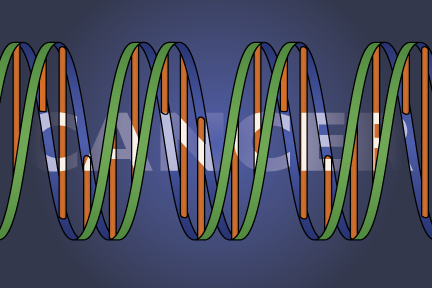Cancer genetics software gets update

Diseased DNA strand
March 10, 2014
Tumor analysis has become faster and more accurate thanks to new technology that better identifies cancer markers.
Researchers at the Mayo Clinic Center for Individualized Medicine in Minnesota made improvements to the system currently used to analyze tumors, called the Binary Indexing Mapping Algorithm program. The software organizes DNA genome pairs to find recurring, reorganized pair patterns that may be markers for cancers, according to a Feb. 3 study from the clinic.
The enhancements made the program 25 percent more accurate and 20 percent faster than the first two versions of the software, according to the study.
Rearranged genome pairs play an important role in the development of many cancers, according to George Vasmatzis, director of the Biomarker Discovery Program at the Center for Individualized Medicine. Chromosomes can rearrange as a result of mutations within DNA, according to Lawrence Fong, associate professor at the University of California San Francisco.
Cancer occurs when mutations affect critical molecules that can direct cells to multiply, he said. If cells continue to spread, they eventually form tumors. The BIMA program organizes the genome pairs and allows physicians to identify those mutations from the pair rearrangements, Vasmatzis said.
BIMA software is also able to look at genetic mutations and identify what cancers they are commonly linked to and where the cells may be found in other patients, Fong said. According to Vasmatzis, it does this by taking genome sequences of various cells and translating them into a numerical form, The sequences are then reordered to find mutations or rearranged genomes.
“It resembles an alphabetized telephone catalog,” Vasmatzis said. “If you had all the people’s names randomly, it would be difficult to find somebody’s number, but after you alphabetize it, it’s a little bit easier. BIMA [reorders] it in binary form that makes it even faster because you can address the genome directly.”
The software was updated with larger indexes to more easily view rearranged genome pairs, said Travis Drucker, lead analyst programmer in the information technology division at the Center for Individualized Medicine. During testing, it was compared to two other sequencing programs—Burrows-Wheeler Aligner and Novoalign—in a synthetic and real data test.
BIMA performed significantly faster in the synthetic tests, which used artificial genomes, and was more efficient in organizing genome pairs in the real tests, Drucker said.
“Real data’s not as nice or easy to work with,” Drucker said. “[Genomes are] a lot harder to actually align and map. Working with the real data, we were able to see a significant amount of improvement with BIMA compared to others.”
Biopsies, as well as imaging studies such as CT scans and MRIs, are currently the most used analysis methods. However, relying on genetics to look for mutated cells is becoming more popular, Fong said, because imaging scans cannot give information on the genome of the DNA and can only produce an image visible to the naked eye.
BIMA-like software became possible through genome sequencing, which did not occur until the human genome project began in 1990. Because computers were slow and the human genome project was only 20 percent complete at the time, sequencing was difficult, Vasmatzis said. But now that sequencing is more advanced, tumor analysis can be done using genetic information.
Deneen Hesser, chief mission officer for the American Brain Tumor Association, said she is excited about the improvements because the software falls in line with American Brain Tumor Association’s mission of advancing brain tumor treatment and individualized medicine. The new technology will help distinguish between tumors that look alike but respond differently to treatments, Hesser said.
“Anything that we can do to help us better understand and more quickly understand the genomic differences between two people … can be the basis of individualized medicine,” Hesser said.
There are cancers whose origins remain unclear, Fong said. But more and more cancers’ origins are being identified and unknown origins are becoming increasingly rare as improved tools and programs, such as BIMA, are developed, he said.
Vasmatzis began working with genome sequencing technology in 1999. He said the future of human genomics is testing enough genomes to see if any DNA genome pair rearrangements that occur in diseased cancer cells can be used to identify cancers in other patients. The sequencing technology could then be used as a global test, making it even faster to indicate the presence of cancer cells and offer each patient individualized treatment, he said.
“The brain tumor community at large is just headed in the direction of being able to identify who will respond to what type of treatment and doing it ultimately on a one-on-one basis,” Hesser said.







